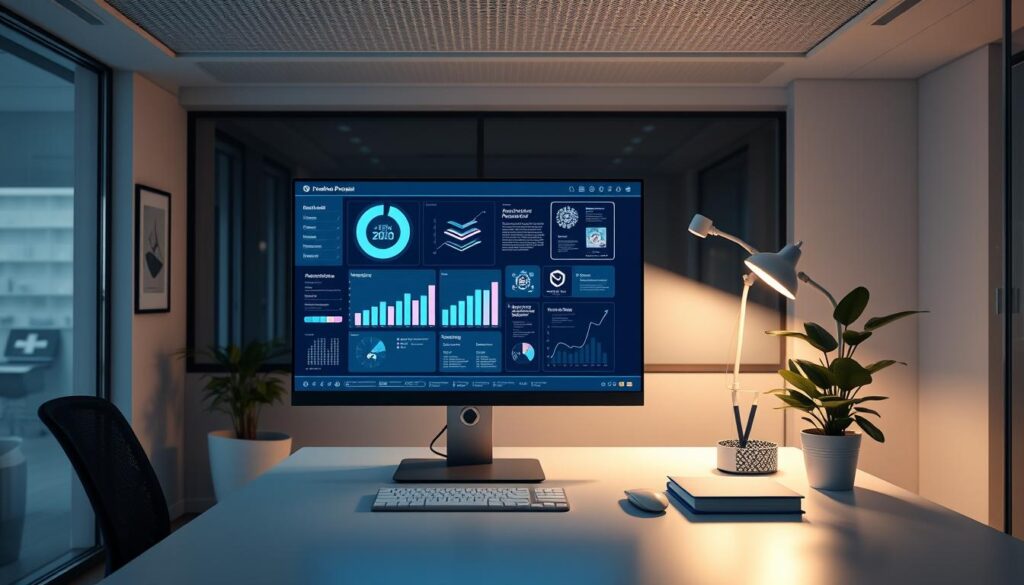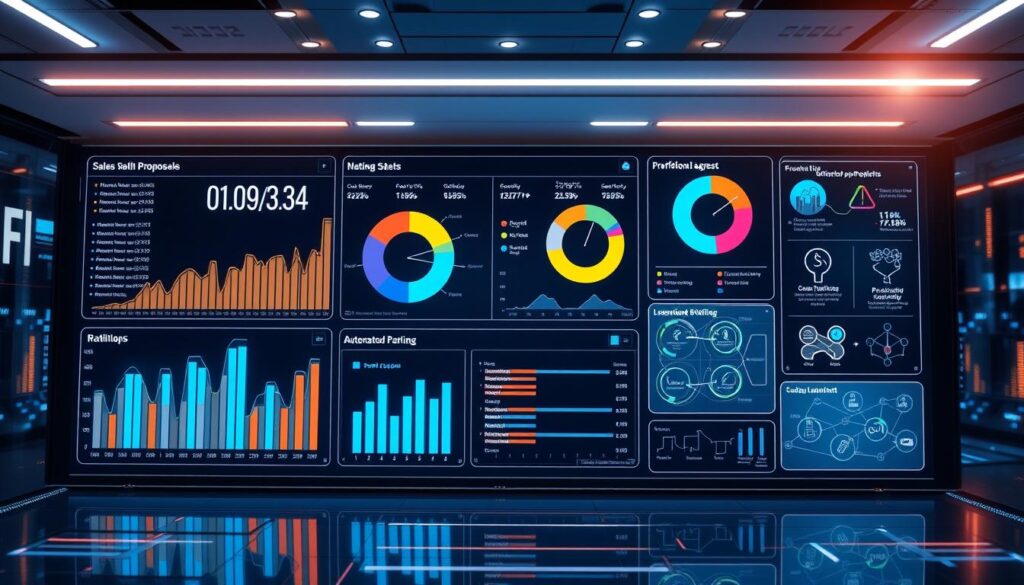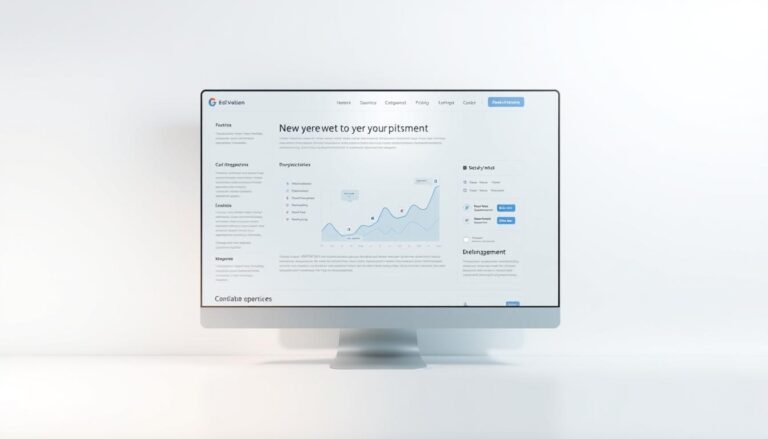In today’s world, being quick and efficient wins the race. Automated sales proposal generation changes how sales teams work. Now, they take about 17 minutes to make a proposal. The State of Proposals 2024 report shows this isn’t a small step but a giant leap forward, based on analysis of 1.2 million proposals.
Linking with current CRM systems makes AI-powered proposal tools even more useful. Every proposal is easy to track. Also, key data on proposal success becomes part of the sales game plan. Tools like Qwilr, with more than 500 5-star reviews on G2, prove that using a modern sales proposal maker not only saves time but also boosts deal wins and saves more time for more sales work.
Top clients like Apple praise automated proposal writing software like Qwilr. This software is not just about paperwork but about gaining an edge over rivals. Sales processes get better, client involvement grows, and proposals reflect a brand’s expertise and creativity.
Key Takeaways
- Automation reduces average proposal creation time from several hours to mere minutes.
- Integration with CRM systems leads to improved tracking and performance metrics.
- Proposal automation tools can significantly increase productivity and close rates.
- Dynamic features such as template libraries enhance customization and branding.
- High-profile client feedback underscores the market confidence in automated tools.
- Real-time editing and analytics contribute to a responsive and data-driven sales approach.
- Automated systems like Qwilr demonstrate substantial time savings and increased deal closures.
Understanding Automated Sales Proposal Generation
Technology has brought us tools like the sales proposal generator. This tool changes how sales were traditionally done. It uses sales document automation to make creating personalized proposals faster and more accurate. This makes sales teams work better, improving the business as a whole.
What is Automated Proposal Generation?
Automated proposal generation makes creating proposals faster and easier by using special software. It allows sales teams to make detailed, customized proposals quickly. For example, Material+ cut down proposal creation time from hours to minutes. This shows how powerful sales proposal automation can be.

Importance of Automation in Sales
Sales document automation changes how businesses talk to potential clients. It ensures that all sales documents are consistent and professional. This makes a company look better and keeps clients happy.
Tools like Proposify and PandaDoc make the proposal process faster by reducing manual work. It lets salespeople focus on selling rather than paperwork. IComm, for instance, made proposals 92% faster. This shows how effective these tools are in a business’s daily tasks.
Using these tools with CRM systems improves data accuracy and client management. It makes the sales process smarter, using real-time information. This improves how decisions are made. It helps businesses grow sustainably in the digital world.
Adopting sales proposal automation is key for staying competitive today. It ensures operational excellence as markets keep changing.
Benefits of Implementing Automated Proposal Solutions
Switching to automated proposal writing isn’t just a trend. It’s a big change that makes sales teams work better and faster. This move is crucial as companies always look to make their operations smoother. Automation plays a key role in making proposal writing more important.
Time Efficiency and Productivity
Using sales proposal automation tools cuts down the time needed to make proposals by about 80%. This huge time savings means sales teams can spend more time on making deals and less on paperwork. This change could increase their productivity by up to 50%. Salesforce’s OmniStudio Document Generation lets them make quick, efficient templates. This efficiency shortens the sales cycle a lot.
Increased Consistency and Professionalism
A proposal creation tool keeps all sales documents consistent and professional. For instance, Salesforce CPQ software prevents pricing errors. This keeps the company’s image high in every proposal. Tools like Titan Docs also help keep proposals professional by adjusting content to be more relevant and precise.
Enhanced Customization for Clients
With business proposal software, sales teams can customize proposals better. They use content libraries, as found in Better Proposals, for more relevant and personalized content. They can add dynamic content like images and charts, making proposals more engaging. Linking with CRM systems makes each proposal feel custom-made and thoughtful.

To sum it up, moving to automated sales proposal generation helps make the sales process better. It leads to more accurate documents, quicker preparation, and better personalization. These improvements help businesses operate more effectively and satisfy their clients more.
Choosing the Right Automated Proposal Software
Choosing the right business proposal software is key for improving sales. It should make creating proposals easy and add strategic value. This helps your business grow.
Key Features to Look For
Look for proposal automation technology that is easy to use and efficient. Customizable templates, integration with other systems, and advanced analytics are important. For example, PandaDoc offers a wide range of templates and helpful features like e-signatures.
Services like Proposify make designing proposals easy with drag-and-drop. Also, being able to connect with your existing CRM is crucial. It helps create personalized proposals quickly and with fewer mistakes.
Top Industry Solutions
Leaders in proposal management include GetAccept and Qwilr. They offer features that meet the needs of modern businesses. GetAccept is user-friendly with great sales tools. Qwilr lets clients change proposal elements on the fly.
Proposal apps make creating proposals easier and faster than word processors do. They also make your proposals look better and more professional.
Using proposal solutions with analytics gives you an edge. You can see how clients react to your proposals. This information helps you follow up more effectively, increasing your chances of success.
Whether you choose Bonsai for its simplicity or Proposify for its analytics, the right tool should match your business’s size and goals. It should help you connect better with clients and grow your business.
Best Practices for Creating Effective Automated Proposals
In leveraging sales proposal automation, certain best practices ensure streamlined operations. They also boost proposal engagement and conversion rates. These practices focus on customizing content for specific audiences and integrating distinct branding and design effectively.
Tailoring Content to Your Audience
Personalization is key in automated sales proposal generation. Sales teams can tailor proposals to the client’s unique needs using CRM data. This direct approach boosts engagement and conversion chances. Businesses that personalize proposals save an average of 20 hours per week, improving productivity and sales volume.
Incorporating Branding and Design
Incorporating your company’s branding into proposals is vital. Automated proposal writing tools offer customizable templates. These maintain brand consistency across sales documents. This consistency boosts your brand’s reliability and professionalism in clients’ eyes.
Furthermore, integrating design elements through a sales proposal generator sets your proposals apart. High-quality imagery and consistent fonts make your brand image compelling. This convinces prospects of your attention to detail and commitment to quality.
Ultimately, combining well-crafted content with unified branding using sales proposal automation platforms simplifies the proposal process. It also greatly improves the effectiveness of each proposal. By focusing on both the aesthetic and contextual sides of proposal creation, businesses can maximize their sales outcomes.
Measuring the Impact of Automated Proposals on Sales
Sales proposal automation is changing how fast we do business. It speeds up drafting proposals and makes sales documents more accurate. Understanding its impact needs a deep dive into proposal analytics and important indicators that affect sales.
Key Performance Indicators (KPIs)
Businesses check the success of proposal software with KPIs like open rates and conversion rates. For example, Bidsketch cuts proposal time in half and has secured over $260 million in sales. Tools like Proposable track how people interact with a proposal, offering clues on what works and what doesn’t. This helps businesses know what led to success or failure and plan better.
Analyzing Success and Areas for Improvement
The link between using automated proposals and better sales results is clear. GetAccept can double the success rate of sales teams with smart automation. Platforms like PandaDoc add personal touches, videos, and easy e-signatures to proposals. This makes everything simpler for potential clients. With insights from proposal analytics, sales teams learn what clients like. They then use this knowledge to improve future proposals. This ongoing improvement, driven by data from software, moves past old sales methods. It opens doors to closing more deals and working more efficiently.
FAQ
What is automated sales proposal generation?
Automated sales proposal generation uses software to make sales proposals. This software, powered by AI, makes the process faster and better. It lets sales documents be more personalized, consistent, and accurate.
Why is automation important in the sales process?
Automation speeds up making proposals and reduces mistakes. It allows for better tracking of client engagement. Also, it helps maintain a unified brand image. This reduces manual work, so salespeople can focus more on client interactions and closing deals.
How does proposal automation increase time efficiency and productivity?
Proposal automation makes it possible to create proposals much quicker than doing it by hand. It can cut down proposal making time by up to 80%. This lets sales teams focus more on finding leads and making sales. This boost in productivity is significant.
What are the advantages of increased consistency and professionalism in automated proposals?
Automated proposals help keep the brand and the look of documents consistent. This builds trust and credibility with clients. Using standard templates and pricing software also keeps pricing and services the same across all offers.
How can customization in proposals enhance client engagement?
Customizing proposals for each client’s specific needs can make a big difference. This personal touch can greatly increase how much clients engage. They are more likely to respond well when the proposal really speaks to them.
What key features should businesses look for in proposal automation software?
Look for a software with a great library of templates, dynamic pricing, e-signature and CRM integrations. Other important features are ways to work together on proposals and detailed analytics. All these features make the proposal process smooth and efficient.
Which are some of the top industry solutions for automated proposal generation?
Leading solutions include GetAccept and Proposify. These tools offer a lot of helpful features and are easy to use. They also work well with CRM systems to help the sales process.
How should content be tailored for an audience in automated proposals?
Proposals should use CRM data and content libraries to make personal and relevant content. This approach directly targets each prospect’s unique needs and goals. This makes every proposal more effective.
Why is incorporating branding and design important in automated proposals?
A proposal that showcases your brand well can leave a lasting impression. It helps with recognition and trust. Also, keeping design elements consistent with your brand makes the proposal look good and professional. This improves how clients perceive the proposal.
What KPIs should businesses measure when using automated proposal software?
Important KPIs include how often proposals are opened, engagement levels, how quickly people respond, conversion rates, and how much time is saved. Watching these stats helps understand what’s working. It guides future strategy and improvements.
How can businesses analyze success and areas for improvement in their automated proposals?
Analytics from proposal software can show which proposals did best and why. This info helps refine content, design, strategies, and pricing for better results in future sales efforts.



